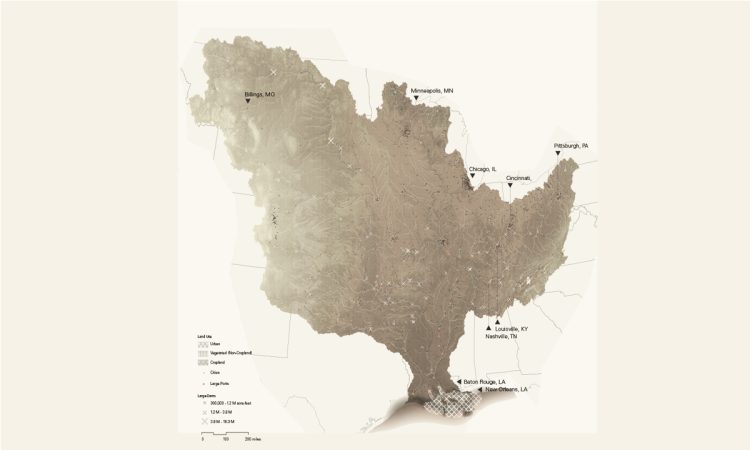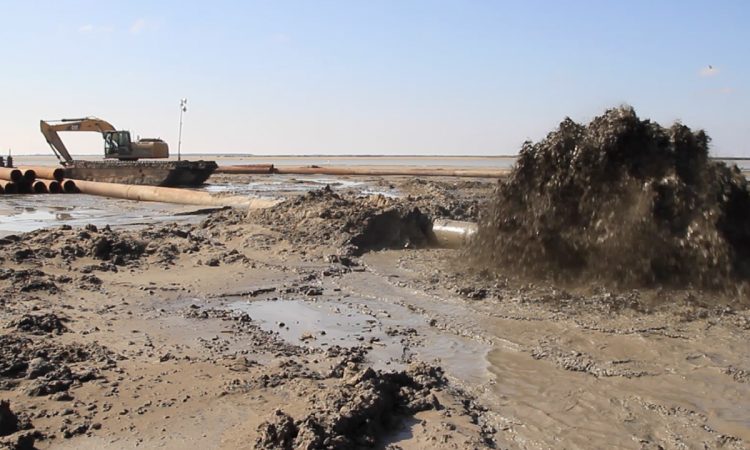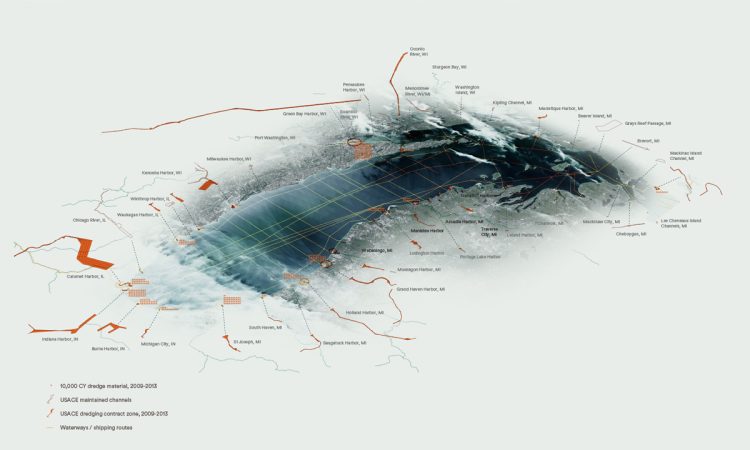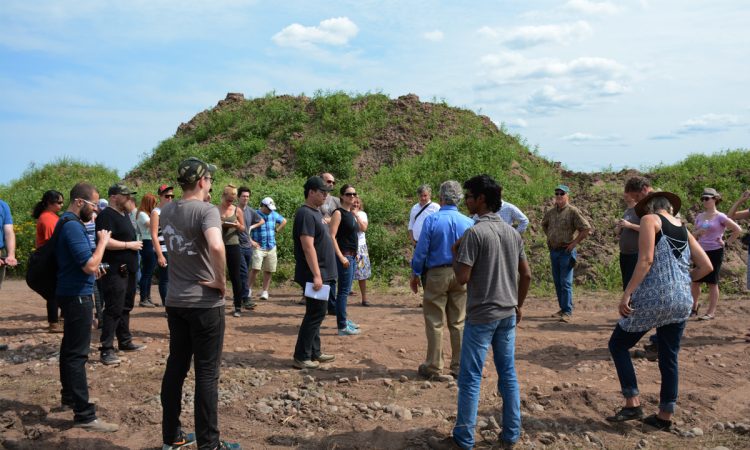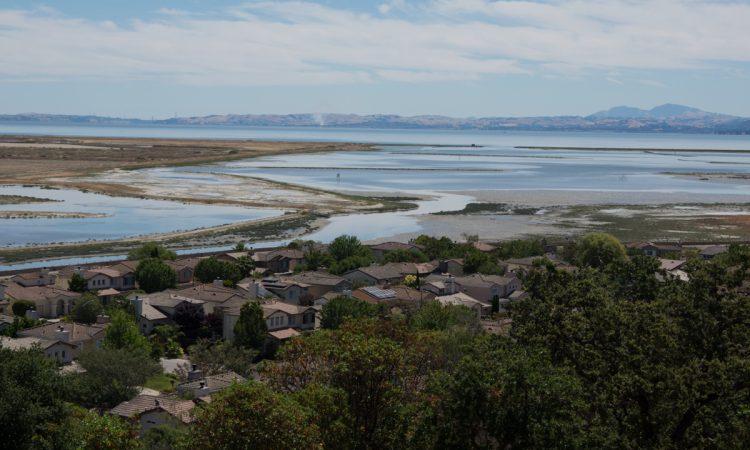
Dredge Research Collaborative (DRC)
2017 – $10,000 Silt, Sand & Slurry: Sedimentary Infrastructure and the Geography of Dredge” Book Publication Project
The Dredge Research Collaborative (DRC) is an independent 501c3 nonprofit organization which investigates human sediment handling practices, through publications, events, and design projects. Our mission is to improve sediment management through design research, building public knowledge, and facilitating transdisciplinary conversation. Over the past ten years, the DRC has been at the forefront of exploring the massive human impact on the flows and movements of sediments, and investigating how these flows might be more intelligently and equitably designed.
The members and co-founders of the DRC organized the critically acclaimed DredgeFest event series across the four coasts of the United States. The first DredgeFest was held in New York City on September 28 and 29, 2012. DredgeFest NYC was organized in partnership with Studio-X NYC, an arm of Columbia University’s Graduate School of Architecture, Planning, and Preservation; sponsored by Arcadis, TenCate, and TWFM Ferry; and featured speakers and content from agencies including the US Army Corps of Engineers, National Park Service, Environmental Protection Agency, and New York City Economic Development Corporation. The second DredgeFest was held in Louisiana from January 11 to 17, 2014. Partners included the Robert Reich School of Landscape Architecture at Louisiana State University, the Coastal Sustainability Studio at Louisiana State University, the Center for Land Use Interpretation, Gulf Coast Public Lab. The third DredgeFest was held in Minnesota from August 14 to 21, 2015. DredgeFest Great Lakes was hosted by the University of Minnesota’s School of Architecture and Department of Landscape Architecture. DredgeFest California, the fourth event, included five days of interdisciplinary design workshops, discussions with many different experts, two days in the field with the DredgeFest California public tours, and background research conducted prior to the event. It was supported by Great Lakes Dredge and Dock, Landscape Architecture Magazine, the UC Davis Hellman Fellows Program, the University of California, Davis’ Department of Human Ecology, Groundworks Office, the Delta Protection Commission, the University of California, Berkeley’s Department of Landscape Architecture and Environmental Planning, and the Dutra Museum Foundation.
Each DredgeFest was designed as a learning encounter between government agencies, designers, theorists, academics, corporate practitioners, industry experts, students, and the public. Each DredgeFest situated sedimentary management in the context of current regional conversations and issues, including climate change, sea-level rise, wetland restoration, environmental justice, public access and recreation
In terms of design and landscape architecture, members of the DRC actively serve as consultants to multiple state and Federal agencies and NGOs to collaborate on infrastructural and ecological restoration design projects, including working with The US Army Corps of Engineers, U.S. Army Engineer Research and Development Center, US Fish and Wildlife Service, CA fish and Wildlife Service and the Nature Conservancy. Members of the DRC also co led the Public Sediment Team and helped craft their award-winning proposal for the Resilient by Design Bay Area Competition.
In addition to publishing numerous articles, book chapters and planning reports, they will soon be publishing a book called Silt Sand Slurry: Dredging, Sediment, and the Landscapes We Are Making, authors Rob Holmes, Brett Milligan and Gena Wirth demonstrate why sediment matters now more than ever, given sea level rise, accelerated environmental change, and spatial inequity. This is approached through a documentation of the geography of dredging and sediment on the four coasts of the continental United States. This documentation is accomplished through alternating, complementary visual chapters and text chapters. Along the way, they explore the many limitations of the way that sediment systems are currently designed, such as short-sighted efforts to keep dynamic ecosystems from changing, failure to value sediment as a resource, and inequitable decision-making processes. Finally, using Public Sediment as a case study, they describe an approach to designing with sediment that is adaptive, healthy, and equitable.


